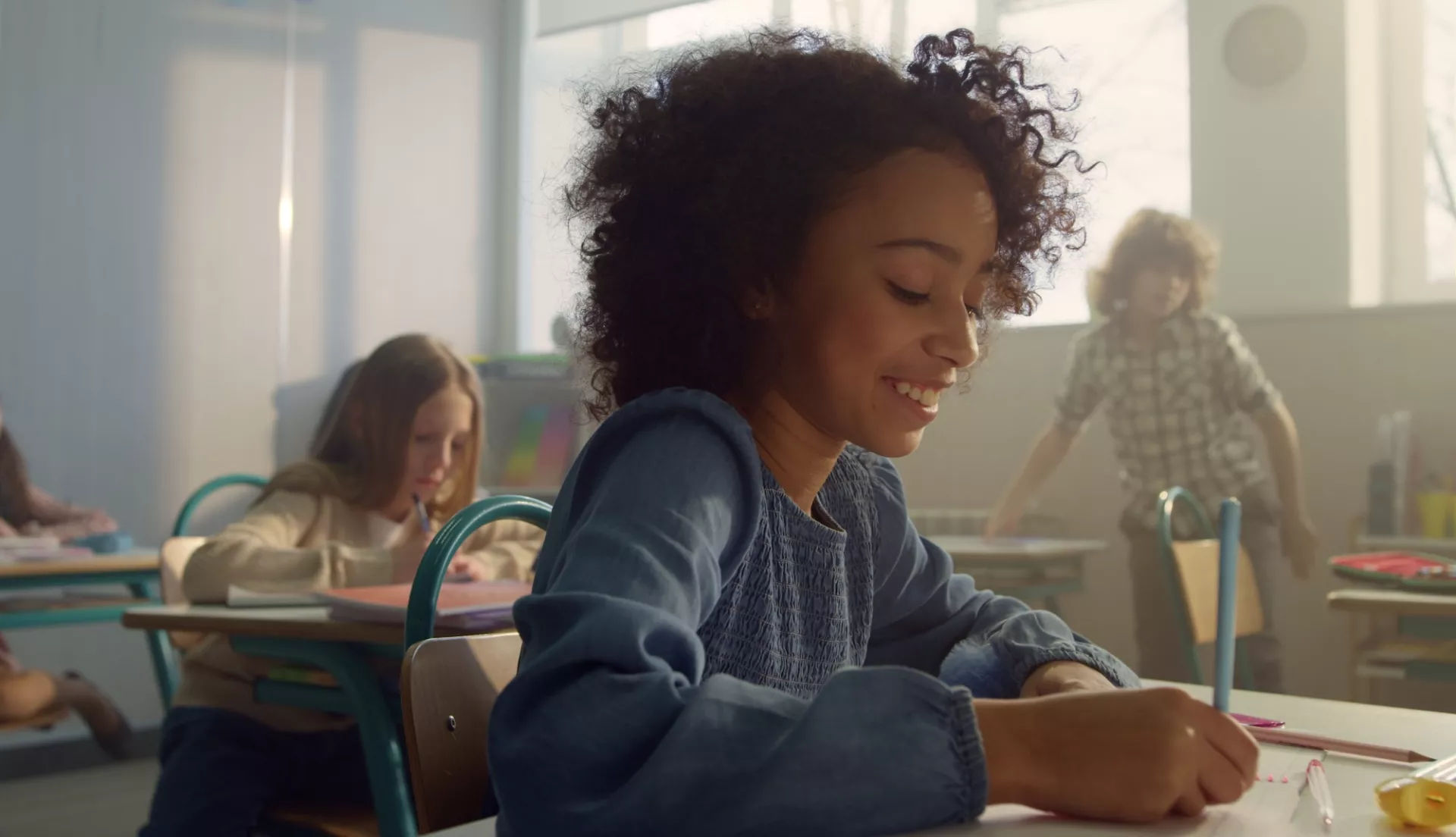
Key Takeaways
- Some activists have tried to make social and emotional learning the latest target in the education "culture wars," but polls consistently show that parents overwhelming support SEL.
- Research shows that SEL has a positive impact on student emotional well-being and academic performance.
- Educators should always be proactive in communicating the benefits of SEL and why it is a priority in their classrooms.
When Tim Smyth started teaching more than 20 years ago, his relationship with his students was pretty formal. He was their teacher. They were his students. In his social studies classroom at Wissahickon High School, in Pennsylvania, he would assign, lecture, and help his students grasp certain concepts. That was his job and he did it well, but he had a motto: Never let them see you smile until winter break.
Then came his “lightbulb” moment.
Smyth suffered a death in his family, and he found that talking with his students about his loss not only helped him navigate through grief, but also made it easier for his students to talk about the challenges and pain in their lives. A door had opened between them that Smyth wasn’t about to close.
“Talking about these issues in class, embedding it in my curriculum, is integral to how my students learn,” he explains. “We’re all human. We’re all going through something, every one of us, especially teenagers. They have a right to be mad, have a right to be sad, a right to be joyful.”
Acknowledging this reality and creating spaces in class to navigate and build relationship and self-management skills are pillars of social and emotional learning (SEL). The Collaborative for Academic, Social, and Emotional Learning defines SEL as “the process through which all young people and adults acquire and apply the knowledge, skills, and attitudes to develop healthy identities, manage emotions and achieve personal and collective goals, feel and show empathy for others, establish and maintain supportive relationships, and make responsible and caring decisions.”
“It’s an evidence-based approach that helps children be successful inside and outside the classroom,” explains Tia Kim, Vice President of Education, Research, and Impact at the Committee for Children, a Seattle-based non-profit that champions SEL.
Even before the spike in mental health challenges triggered by the COVID-19 pandemic, Smyth’s district and many others had infused SEL into classrooms and school culture. Other school systems across the nation, however, have been playing catch-up. And some communities might be skittish, as SEL is sometimes attacked by lawmakers seeking to vilify schools, much like they attack lessons about race. But even if you tune out the political noise, many supporters and practitioners concede that SEL could use some demystifying.
Too often, it is described as a “buzzword,” which diminishes the value it can bring to the classroom. In addition, while surveys of educators and parents consistently demonstrate strong support for SEL, they also show that some teachers feel unprepared— and they want and need to know more. The labeling may be getting in the way, says Marguerethe Jaede, a former teacher who now works with Ohio school districts on SEL implementation.
“Many educators have always understood good SEL development,” she says. “They may not have had the concept label for it. They may not have the language for it. But they’ve done it intuitively, because it makes their kids feel safe and smart.”
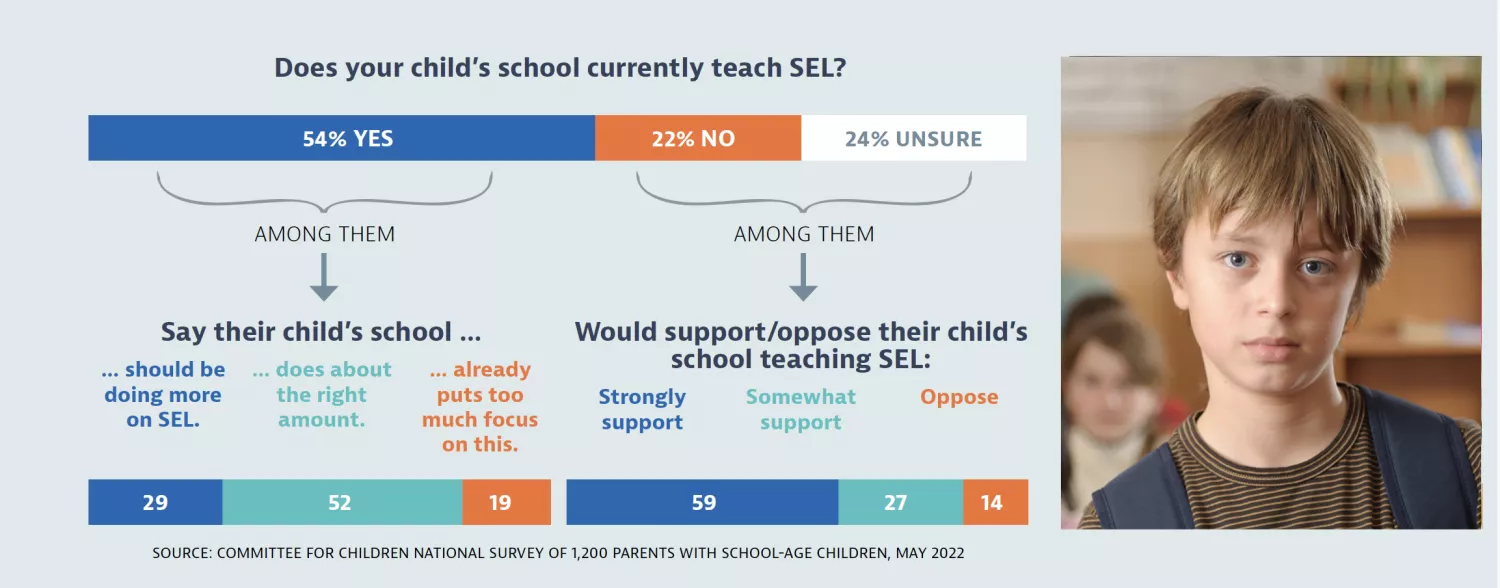
Strong Support From Parents
If you were to ask your average parent if they would like their child to get along with fellow students, communicate well, be more empathetic, and engage in respectful conversations in the classroom, you would likely hear a resounding yes.
And if you also informed them that research consistently shows that SEL programs increase student achievement and develop workplace readiness skills, their enthusiasm would only grow.
These are facts that the individuals who are attacking public education will not acknowledge. Instead, they try to vilify SEL as a Trojan Horse for indoctrinating children with so-called ‘critical race theory.’
Even in the face of these ridiculous attacks, parents’ support for SEL is strong. A May 2022 poll conducted by the Committee for Children found both Republicans and Democrats value SEL in schools. Among parents whose children receive SEL instruction, 8 in 10 said they want the school to maintain or increase its presence. Similar percentages view the term “social and emotional learning” positively.
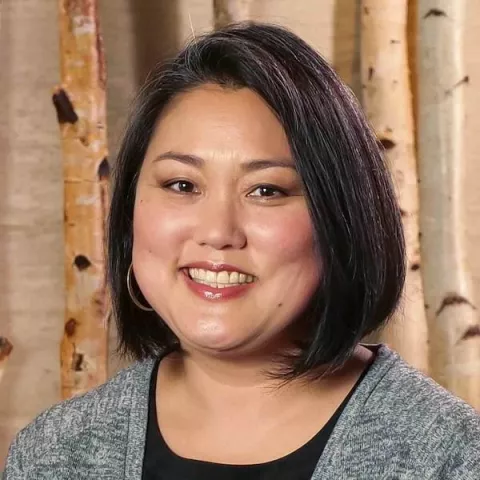
“When parents hear about SEL, what it can achieve, how it can help their kids, they get on board,” Kim says.
Despite its popularity, educators and schools should always take the opportunity to model and present SEL to parents and explain why they are prioritizing it in the classroom, Kim adds.
“Educators can do a lot to demystify SEL,” she says. “We know that families already play a huge role in developing these competencies, but their kids spend a lot of time in schools. So it’s an extension of that learning.”
And these lessons can happen across an entire school campus. From interactions at the bus stop to administrative staff in the office to conversations with the school nurse or psychologist, all educators are there to meet the needs of students and their families.
As the challenges facing students and schools multiply, Smyth believes the stakes are too high to ignore SEL.
“If you want to teach effectively, if you want to show results, if you want school community to improve, if you want education to improve, we must have that engagement and involvement on that human level,” he says. “Otherwise, a lot of your students aren’t going to be with you.”
_______________________________________________________________________________________
_______________________________________________________________________________________
Embedded in School Culture
Success may depend on whether a school avoids a common pitfall, Jaede cautions.
“They see it as a one-off, a professional development day or maybe a week for teachers and other school staff,” Jaede says. “SEL isn’t a side lesson. SEL should be however you teach, whatever content you’re teaching. It’s how you structure the spaces where learning happens.”
In a large, urban district like Ohio’s Columbus City Schools (47,000 students, 116 schools, and 9,000 staff), implementing SEL in a comprehensive way takes a lot of resources and partnerships. Jaede is the executive director of Partnership4Success, an equity- focused organization that brings together stakeholders to improve the social and emotional well-being of children. The organization works alongside Columbus City Schools to train educators and help schools create safe, positive learning environments.
Tyree Rivers, climate and culture coordinator at Columbus City Schools, has seen the work evolve over the past two decades.
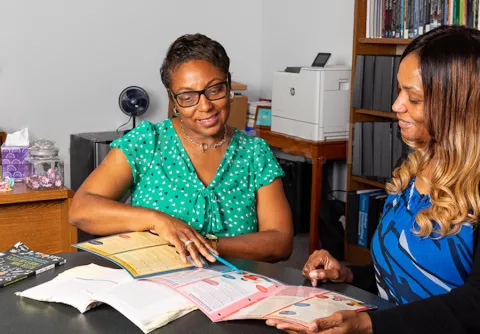
“Over the years, we’ve tied our trauma-informed and restorative practices to SEL. These have always been districtwide initiatives, and the partnerships provide a level of expertise that enables us to do a deep dive into equity,” she says.
Rivers works with a team of full-time SEL coaches who collaborate with teachers in incorporating SEL into everyday instruction. The coaches are an indispensable addition to the staff made possible by the advocacy of the Columbus Education Association (CEA).
In 2018, CEA members compiled a list of concerns for bargaining, including the need for additional SEL supports. They demanded dedicated staff to coach and help lead these efforts—and they succeeded.
“They help teachers make alignments in the curriculum, how they can tap into SEL on a regular basis,” Rivers explains.
This is crucial so educators will not see SEL as that “one more thing” that is asked of them. SEL coaches walk teachers through the challenges of embedding or restructuring the curriculum. Partnership4Success has also added new training for adult SEL.
“We can be more intentional in how we embed SEL, without it being too heavy a lift,” Rivers says. “It is intrinsically part of our jobs.”
SEL: What Good Educators Do
Strategies that work in the largest district in Ohio can also work in the smallest district in North Carolina. The Edenton-Chowan district has only four schools and 1,900 students. Forty-five percent of students are economically-disadvantaged.
“We are Title I schools, and we have a lot of kids coming into class not being able to control their emotions, not knowing how to process things,” says Stacey Banks, a fifth-grade teacher at D.F. Walker Elementary School, in Edenton.
Since 2018, the district has gradually but steadily weaved SEL practices and instruction into every facet of school life. Schools began by creating calm spaces and introducing mindfulness exercises in elementary classrooms, and the district is now transitioning SEL into middle and upper grades, with a focus on mapping SEL to state aligned practices.
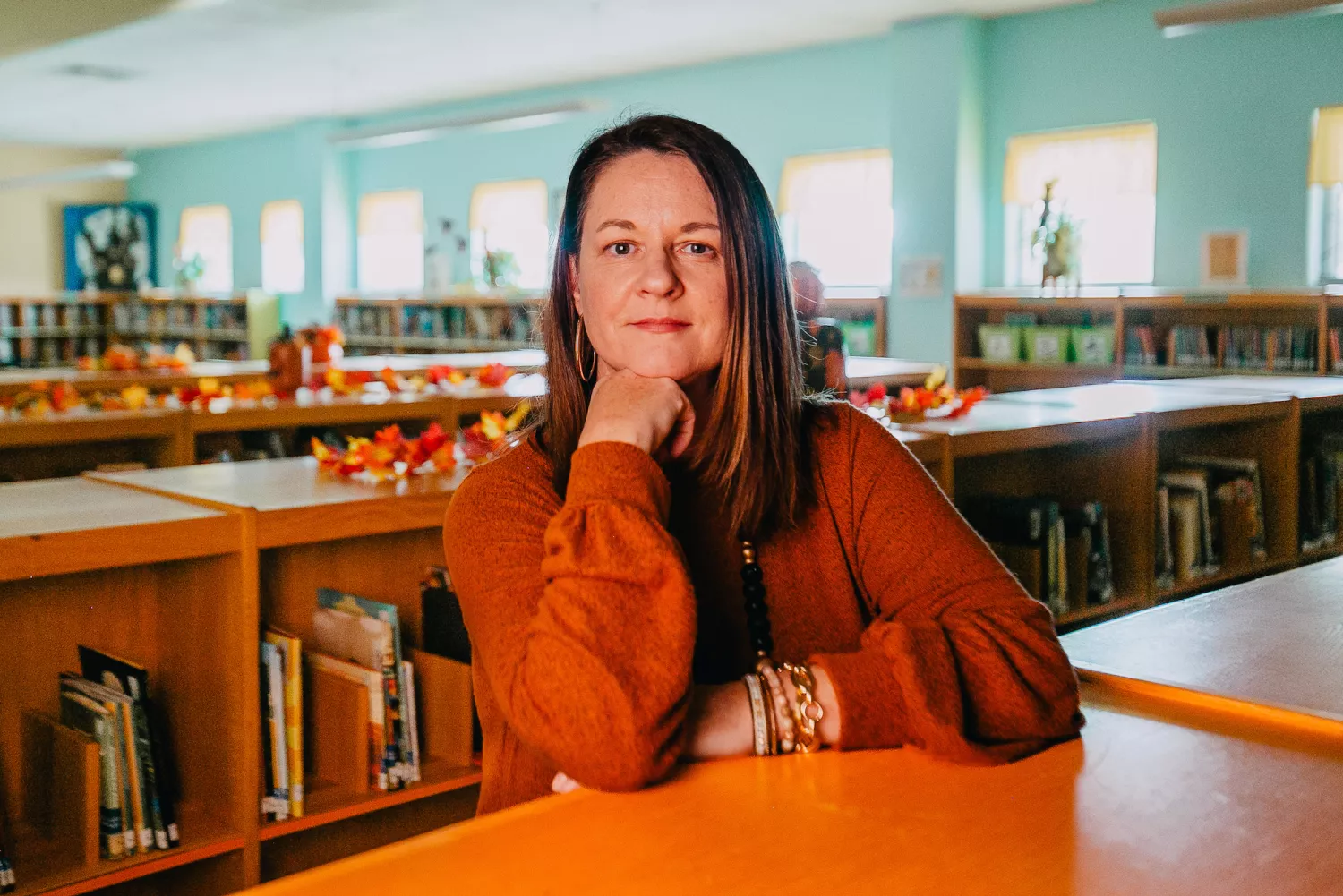
“By the time the kids reach my fifth-grade class, SEL is already part of the culture,” Banks says. “They have the background and foundation to help us meet their emotional needs. And they are more prepared for the curriculum.”
At D.F. Walker, SEL development teams in each grade work with teachers to integrate SEL into their professional learning communities. “Every step of the way, we are pushing this stuff into our classrooms,” Banks says.
The underlying ideas and practices are not too far removed from what Banks was taught as a child—or what she has tried to do in her own classroom for years. The scope, structure, and sense of mission sets the district’s initiative apart, but fundamentally SEL should not be a huge leap for any educator who wants a classroom where students feel safe and included, she says.
“It helps to understand that this isn’t really new,” she adds. “Good teachers have been doing this for a long time.”
SEL is For Everyone
For all the careful, deliberate planning and implementation of SEL, a school’s program could still stumble out of the gate. How? By not adequately supporting the social and emotional well-being of educators.
“I do think it’s a missing part of the conversation,” says Brytan Felter, a special education occupational therapy assistant in Fairbanks, Alaska, who gives presentations on well-being and SEL for educators.
“I’ve been in these meetings … with practitioners, and even though they say SEL is also for educators, I’m not hearing a lot of details. You have to be able to deescalate before you can have a positive impact in the classroom.”
“We can be more intentional in how we embed SEL, without it being too heavy a lift. It is intrinsically part of our jobs.”
Jaede agrees. “If you don’t have self-awareness, you can’t teach it to somebody else,” she says. “You can’t expect an adult to foster something in an environment which doesn’t exist in the environment you work in.” An already stressful job could easily be compounded by the new expectations around SEL. Just because educators are usually the most vocal champions for SEL, the support and resources must come from the top down, Banks says.
“We’ve got a lot of pots on the stove and they’re boiling over,” she says. “But we’re taking this slow, and it may take a while to get the buy-in from everyone and see the results we want to see. But we want to move forward. This is it. We’re not turning back.”
__________________________________________________________________________
Six Ways You Can Speak Up For SEL
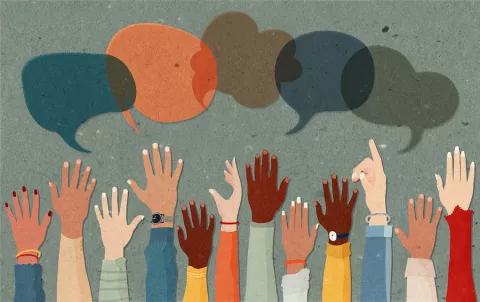
Aaliyah A. Samuel is the President and CEO of CASEL, the Collaborative for Academic, Social, and Emotional Learning, which provides a framework for SEL instruction across the nation.
“Educators have incredible insight into how learning happens,” Samuel says. “Their voices are so essential to the conversation.” Here are steps she says educators can take to share accurate information and real stories about social and emotional learning.
1. Focus on building authentic partnerships with families in order to have meaningful conversations about the importance of SEL.
2. Begin conversations around shared goals: What do we all want for students? What should they know and be able to do upon graduation? What type of classroom will help them get there?
3. Use high-quality, evidence-based SEL approaches and continuous improvement practices to ensure every student benefits.
4. Help demystify SEL by sharing what it actually looks like day-to-day in classrooms.
5. Share real stories about the impact that social and emotional learning has had on your life or your students’ lives.
6. Contact local leaders, such as school board members or legislators, to share support for SEL.
Learn More

